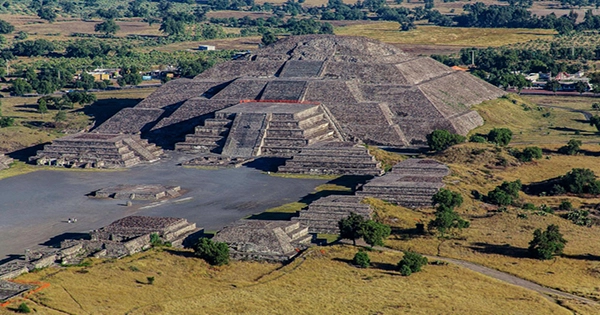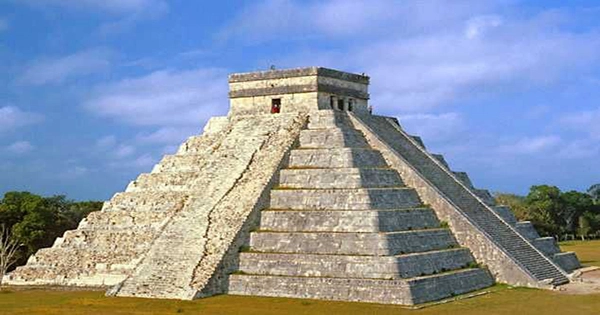The Aztec Empire was a civilization that flourished in central Mexico before European explorers arrived during the Age of Exploration. The Aztec Empire spread across most of central Mexico and the neighboring territories throughout its history as a civilization, eventually becoming the most powerful and dominant people in the region. The principal Aztec metropolis (or altepetl) of Tenochtitlan was the epicenter of this immense empire.
The Aztecs were master builders, constructing pyramids, ball courts, plazas, temples, and dwellings, among other structures. The Aztecs, on the other hand, saw the Toltec as a key influence on their own building. From around 900 CE to 1168 CE, the Toltec were a Mesoamerican civilization that flourished in central Mexico. They are a significant civilization in Mesoamerican culture since many following societies in the same region saw the Toltec as an example of the pinnacle of craftsmanship and sophistication. The Aztecs, for example, thought themselves to be the descendants of the Toltecs. The Aztecs respected the Toltecs for their art, architecture, craftsmanship, and culture, among other things. Some historians have questioned whether the Aztecs were descended from the previous Toltec culture, but similar claims have been made about other Mesoamerican civilizations, such as the Teotihuacan. Regardless, the Toltecs spoke Nahuatl, the same language as the Aztecs. In Aztec society, the Nahuatl name for Toltec came to imply ‘artisan’ in relation to their belief that the Toltec were Mesoamerica’s pinnacle of culture, art, and design.

The Aztec Empire is known for many things, including the incredible architectural styles that the Aztecs used to construct their structures and cities. In truth, Aztec architecture shared many characteristics with those of earlier Mesoamerican civilizations, such as the adoption of a grid system in city planning and the construction of huge pyramid-shaped temples. The pyramid, for example, was an important part of Aztec architecture and was prominent in their own city-state (altepetl) in Tenochtitlan. The major temple of Tenochtitlan, the Aztec capital, is known as Templo Mayor.
The Templo Mayor, which was built in the center of Tenochtitlan, was a stepped-pyramid with two shrines built on top of it. Unfortunately, little of the original pyramid survives, and the majority of descriptions of the temple are based on historical records, particularly those of the Spanish conquistadors who saw it during their conquest of the Aztec Empire in 1521. This is because the Spanish destroyed much of the Templo Mayor and Tenochtitlan when they captured the city and crushed the Aztec Empire. Furthermore, once the Spanish (headed by Hernán Cortes) destroyed Tenochtitlan, they erected their own metropolis on the ruins of the previous Aztec capital, which is now Mexico City.
The Templo Mayor, seen by the Spanish conquistadors in 1521, was said to be the seventh and last iteration of the great temple. Historians think that the great temple was first built shortly after Tenochtitlan’s establishment in 1325, and that it has since undergone numerous additions throughout the Aztec empire’s history. The temple was originally made of earth and wood and was relatively small. The temple was thereafter expanded by successive Aztec leaders known as huey tlatoani.
Modern investigations of the ruins of Templo Mayor reveal that the temple’s extensions were literally erected on top of the existing building, resulting in several different strata of the temple, each of which reveals its history.
The final version of the Templo Mayor (the one seen by the Spanish in 1521) was most likely built around the end of the 15th century. It was a pyramid with four levels or terraces and two sets of stairs leading up to the summit platform. The temple was 180 feet (60 meters) tall and featured a wide platform on top. Two shrines to two separate Aztec gods who had a key part in Aztec religion were located on the upper level. The pyramid was painted in vibrant hues and included creative reliefs of serpents and Aztec warriors, according to Spanish reports.
Several major aspects of Aztec architecture are highlighted in the Templo Mayor. To begin with, they did not demolish enormous constructions such as temples; instead, they just built on top of them, enlarging and embellishing them. This has been encountered at various Aztec archaeological sites, although it is most likely best visible in the Templo Mayor ruins. Second, the Aztecs were excellent craftsmen who could effortlessly work with stone to construct vast, ornate temples. Third, Aztec culture, including religious beliefs, gods, and astronomy, was prominently incorporated in their buildings. Several imagery, such as the eagle, serpent, conch shell, and sea creatures, can be found in Aztec temples. All of these symbols represented distinct parts of Aztec life and played major roles in Aztec cultural beliefs.
Aztec dwellings, in contrast to enormous stone temples, were mostly made of interconnected wood logs. Mud bricks were possibly also used (adobe). The dwellings’ floors were often dirt or stone. Small sticks weaved together or a form of thatch was used to construct the roof (straw, leaves, grass, etc). The dwellings of the middle class (macehualtin) were often one single room, with the family sleeping in it at night and a shrine honoring the gods during the day. Having said that, aristocrats’ homes (pipeline) were far more complex in order to identify their riches and social status. Nobles’ homes, for example, were usually larger and featured more furniture. Nobles’ residences, for example, were typically larger and housed more ornate artwork relating to Aztec religion and customs.














